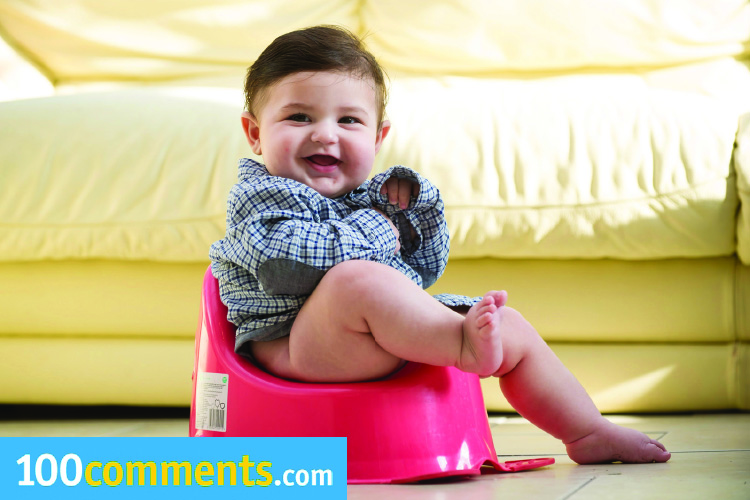Table of Contents
Dealing with Constipation in Babies and Toddlers
One of the many worrisome health issues for parents of babies or toddlers is dealing with constipation. No parent wants to see their little one in pain and discomfort, and it’s easy to conclude that prevention is better than cure. However, constipation is not always easy to prevent.
Causes for constipation in little ones
There may be a number of causes for constipation. One of them is when little ones do not consume enough fluids or fibre in their diet. A diet lacking of water and/or fibre will cause stools to be more difficult to pass.
Drinking too much milk along with inactivity or lack of exercise may also cause constipation in some little kids.
A child who has experienced difficulty or pain while pooing will also tend to hold back from pooing. A child might also be back holding because he’s too busy playing.
These situations can all lead to a build-up of poo in the bowel. When this happens, the poo gets too hard for your child to push out easily.
There are some underlying medical conditions that might cause constipation in children, but these aren’t common.
Symptoms of constipation in children
The main symptom of constipation in children is obviously, stools that are hard and difficult to pass. Consistency of normal poo should be toothpaste-like and easy to push out. During a bout of constipation, it will feel painful and uncomfortable trying to poo. The hard poo might overstretch the skin around the anus and cause small, superficial tears, which might lead to pain and bleeding. Because of this, a child might even end up avoiding or holding back his or her poo, just to escape from the discomfort.
Your child might also have tummy pains that come and go. Watch for ‘holding back’ behaviour such as rocking or fidgeting, crossing his legs or refusing to sit on the toilet. A child suffering from constipation might generally be more cranky than usual too.
Pooing frequencies vary
Not every child that doesn’t poo everyday is constipated and what’s normal in one child might not be so in another. Some young children are known to only pass motion twice a week and yet, are not constipated. Seek your doctor’s advice on whether your child is constipated or not.
Faecal incontinence
A child who has been constipated for a long time might accidentally poo in his or her pants without realising it. This happens when hardened poo stretches the rectum, making a child lose the urge to go the toilet because the rectum always feels stretched. Liquid poo might overflow around the old hard poo, without the child feeling it or meaning to let it go.
When to see your doctor
You should take your child to the doctor if:
- Your child’s constipation doesn’t get better after a laxative is given, or the constipation lasts longer than two weeks
- Your child constantly poos in his or her pants without meaning to
- Other than being constipated, your child also has a fever, is vomiting, has blood in the stools or is losing weight
- There are cracks which are painful in the skin around the anus
- Your child has constipation and doesn’t seem to be eating or drinking well
- You need to give your child a laxative many times a year
Steps that lead to healthy bowel habits.
Diet
A healthy diet that has enough fibre and lots of fluids (especially water) helps to both treat and prevent constipation. Boosting a child’s fibre intake will make bowel movements easier. Offer foods such as wholemeal bread and cereal, and fruits and vegetables such as prunes, figs, apricots, plums, peas, broccoli, sweetcorn, potatoes and baked beans.
Prunes can be mashed and disguised in your little one’s food. Try offering fruit with the peel left on, and leave potatoes and chips in their skins. Note: Don’t overload your toddler with high-fibre foods – they shouldn’t form the bulk of his or her diet until the age of five. Too much fibre will over-fill little tummies and prevent little ones from consuming more high energy food which is needed for growth and development.
Regular toileting
If you suspect that your child might be constipated, encourage the habit of sitting on the toilet regularly and pushing, two times a day for 3-5 minutes each time. Try this 20-30 minutes after meals.
It may also be worth a try to have your child place his or her feet on a footstool or box while sitting on the toilet. Get your little one to place his or her feet flat and lean forward slightly while pushing.
You can also teach your child to be aware of and respond to his body’s urge to poo by going to the toilet. If you must, use incentives! Perhaps you could offer a reward for your child to go to the toilet as soon as nature calls.
















